ASRock Z87M OC Formula Review: mATX OC at $190
by Ian Cutress on August 14, 2013 10:00 AM EST- Posted in
- Motherboards
- ASRock
- Haswell
- Z87
ASRock Z87M OC Formula BIOS
First major point on the ASRock BIOS which should be mentioned – if you have read into the issue of MultiCore Turbo (MCT)/Acceleration/Enhancement I have discussed previously then this will seem a little bit odd. The point is that MCT affords a 7% boost in multithreaded compute and most mainstream motherboard manufacturers apply it knowing that almost all CPUs should be able to perform with the stock cooler at this enhanced frequency. ASRock only enabled it (by default) on their Z77 OC Formula motherboard for last generation, and for this generation they are still in the throes of deciding where it sits in Z87. The by default is important – many users will buy a product without touching the BIOS, and thus default specifications are mightily important. With the Z87 OC Formula/AC, the latest public BIOS, 1.40, did not have it enabled by default, while the latest beta BIOS did (1.42B). This is in comparison to the Z87M OC Formula which I am currently testing, which has it enabled in the pre-release media BIOS (1.11C) but not in the latest public BIOS (1.30), meaning reviewers are going to have a hell of a time discerning what is what, because the BIOS is such an important part of the testing package. The word from ASRock is this: the Z87 OC Formula should have MCT enabled by default as of the 1.50 public BIOS. The Z87M OC Formula is still up in the air, as we will see in the review.
Update 2013.08.13: ASRock have confirmed that the Z87M OC Formula, from BIOS 1.50, will have MCT enabled by default.
The next major point is an issue that has been cropping up on enthusiast forums, saying that the ASRock BIOSes like to ‘hang’ (keep the same screen and not do anything). Now I experienced it once during my testing of the Z87 Extreme6/AC while I was overclocking, and thus assumed it was due to a voltage being too low. But with the Z87 OC Formula, I was getting this from the first few minutes of taking screenshots of the BIOS and this is what I could conclude:
- The BIOS does not freeze, but commands selected and actions will still occur even if the screen does not update.
- This is an issue with the way the BIOS forces a redraw of the elements on the page, and is only fixable with a BIOS update.
With the Z87M OC Formula, on the 1.30 BIOS, I did not experience any issues with freezing either at stock or while overclocked.
Despite the BIOS issue of processor speed, the ASRock Z87M OC Formula BIOS holds up as well as the previous ASRock Z87 BIOSes did in our previous Z87 motherboard reviews. As you can expect, most of the functionality is the same, with a few minor differences due to the OC branding compared to the Extreme series.
While our normal entry screen to the BIOS is the Main screen, the M-OCF initially starts with the overclocking menu. Despite this, the Main screen gives some basic info on the system at hand: motherboard name and BIOS version; CPU name and current speed; total memory installed along with DRAM slot detection and current speeds. I would prefer some additional information here as well such as CPU temperatures and voltages, perhaps fan speeds, in a visually pleasing representation.
The couple of features at the bottom are worth noting. The first is an option to adjust the page on entry, meaning that overclockers can go straight into the overclocking options menu when entering the BIOS rather than have to navigate through the Main menu. The final option is a UEFI Guide option, which when selected will go through a quite slow text guide of the different features of the BIOS. This is in part a nice idea for new users, though I believe the guide has to be more refined than this initial version.
Most enthusiasts are going to head on over to the OC Tweaker menu to adjust overclocking options. ASRock have separated the overclock options under headings for a single menu, starting with automatic overclock options (4.0 GHz to 4.8 GHz in 200 MHz jumps), then CPU, DRAM, FIVR (Fully Integrated Voltage Regulator), and finally voltages. We get separate menus for DRAM timings, which also comes with a memory tweaker for XMP settings.
As this is an overclocking board, we have some specific ‘NickShih’ overclocking profiles to help new users to the extreme overclocking scene. Nick is ASRock’s in-house overclocker, previous world #1 and the OC Formula range all stems from his ideas and inputs, hence why the motherboard has his signature on it.
The OC Profiles provided mostly require the hand of an extreme overclocker and a system under liquid nitrogen, or for the memory presets, a good memory kit. We get the option of a 4000 MHz memory option, an air-based SuperPi 32m setting selection, and then options from 5.8 GHz to 6.6 GHz, all requiring liquid nitrogen and a CPU with good overclocking characteristics. Similarly, in the DRAM Configuration menu, Nick has supplied a variety of sub-timing presets for users with special Hynix memory kits wanting to push the edge in extreme overclocking.
In the Advanced Menu is where we get our enable/disable controller options, along with adjusting the SATA configuration for RAID setups.
The ASRock Tools menu is where we often find ASRock’s newest additions to the BIOS. Every generation we seem to get something new – from the past we get the System Browser, the Online Management Guard, Dehumidifier function and Internet Flash. New for this generation is the ‘UEFI Tech Service’, ‘EASY RAID Installer’ and ‘Easy Driver Installer’ options.
Starting with the System Browser, this is a top down pictorial representation of the motherboard, and the different items that are inserted into the motherboard before POST are shown here, such as the memory, what is detected in the PCIe slots, as well as SATA and Rear IO configurations. This is particularly helpful if a user suddenly loses access to a GPU, memory stick or hard drive – if it is not detected in the System Browser, it will not be detected in the operating system.
Online Management Guard (OMG) is a simple attempt to disable network ports at various times of the day. While easily circumnavigated by adjusting the BIOS time or manually disabling the option in the BIOS, the purpose behind this feature is to adjust when children are allowed to use the internet, or for businesses to disallow ‘casual browsing’ after hours.
The UEFI Tech Service option is designed to send problem reports to ASRock directly from the BIOS. This feature only works if you have a wired Ethernet connection to the internet, and sends ASRock an email with the BIOS information used as well as a description provided by the user. There is a similar feature in the OS software.
The Easy RAID installer helps users take the RAID driver off the driver disk and place it onto a USB stick for installation of a Windows OS onto a RAID array, and Internet Flash allows users to update the BIOS with the latest version from ASRock’s online servers without jumping into an OS.
In the hardware monitor section, unlike the ATX OCF, we do not get additional temperature sensors, although the fan controls are improved a fair way from the previous ASRock fan controls (despite still not perfect). We can adjust the fans as part of six different groups, and ASRock allows users to select from a series of pre-defined settings: Silent, Standard, Performance and Full Speed. The other option is Custom mode, which allows users to define five points along a fan curve:
While this still uses the ‘power applied to the fan is directly proportional to the fan speed’ philosophy that annoys me so much (more bad physics than anything else), this is a better set of fan controls than most. There is a similar set of controls with the software.


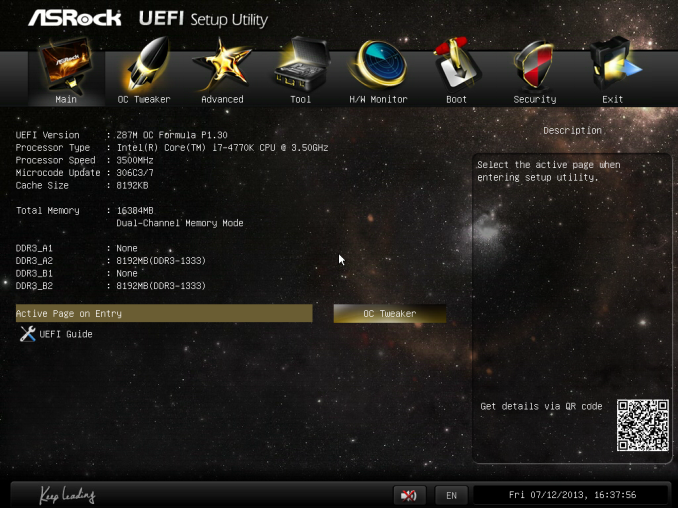

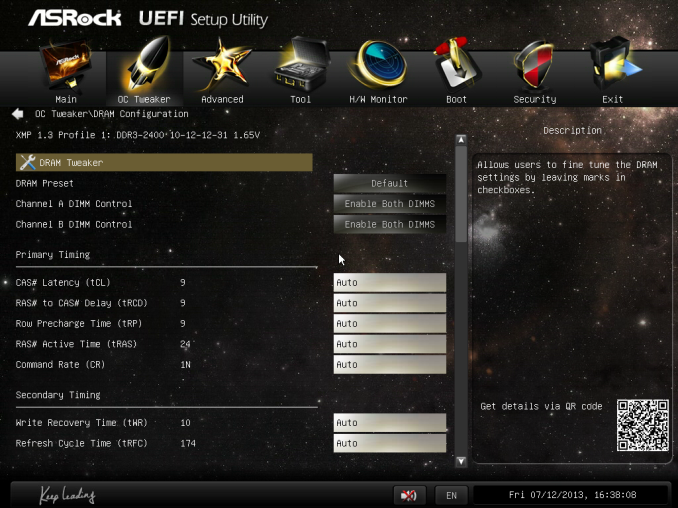
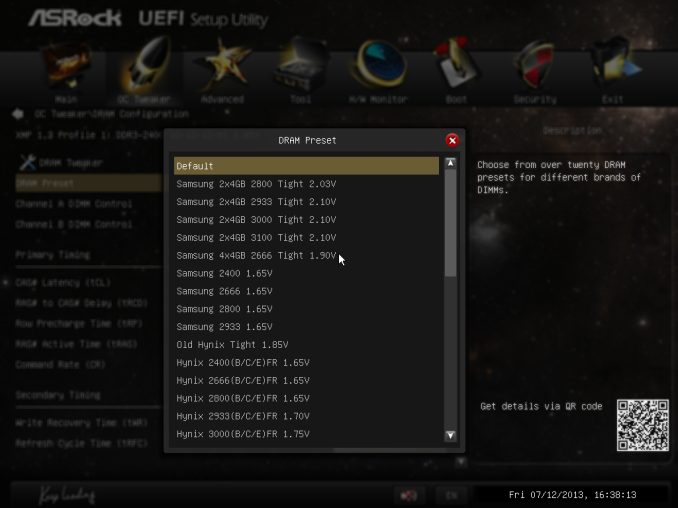
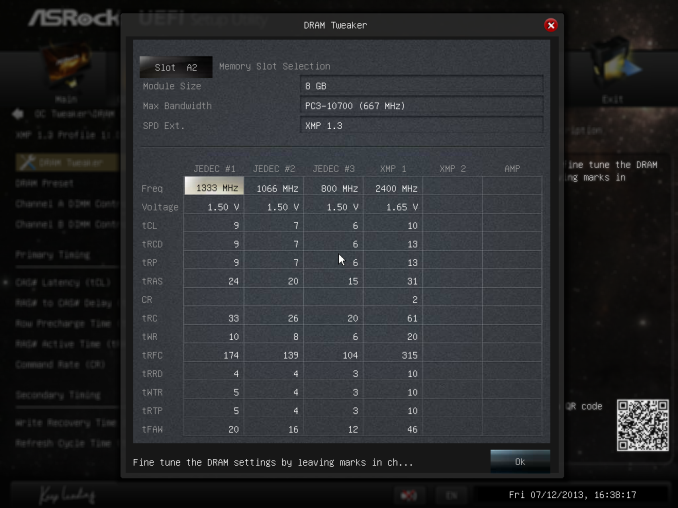
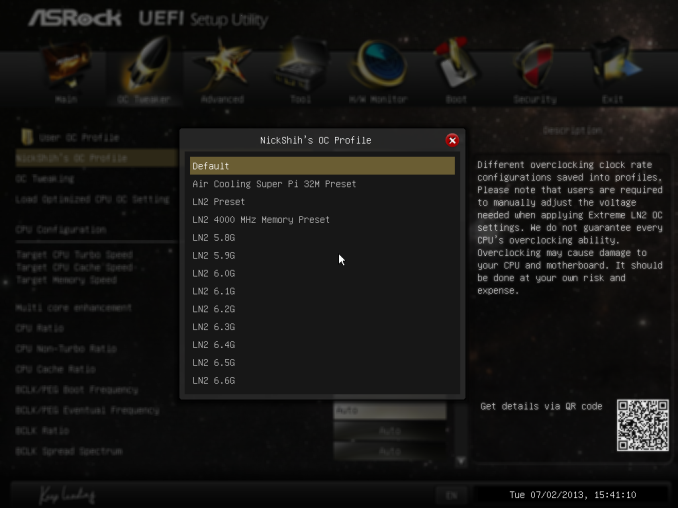
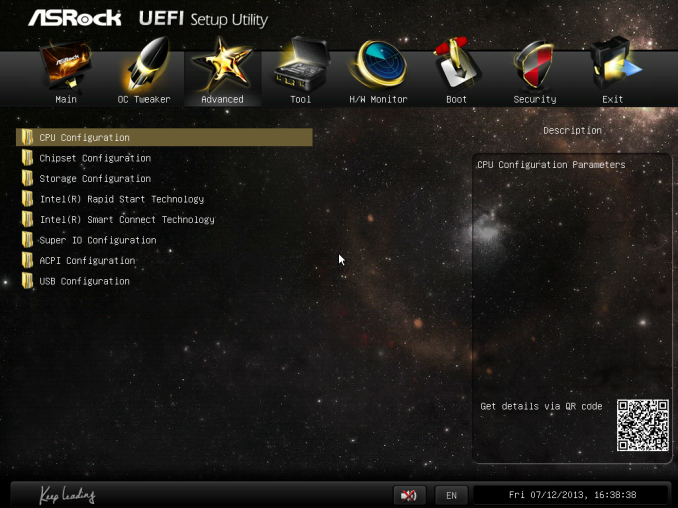
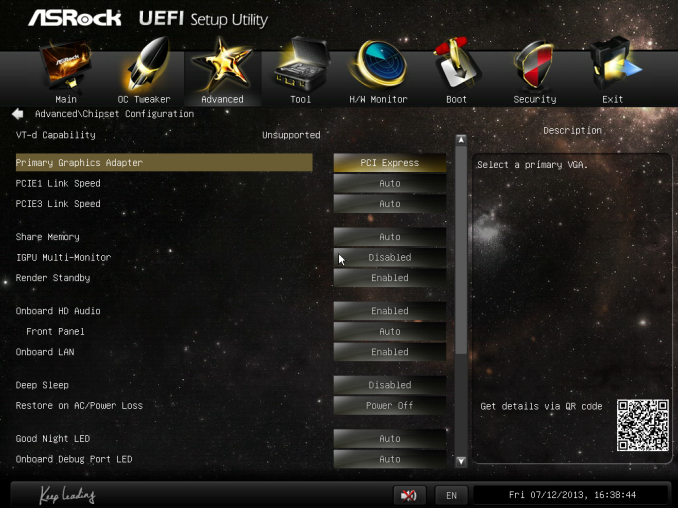
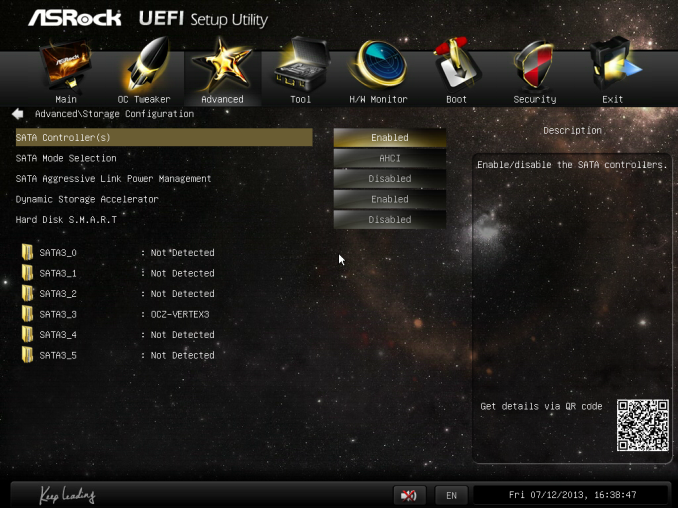
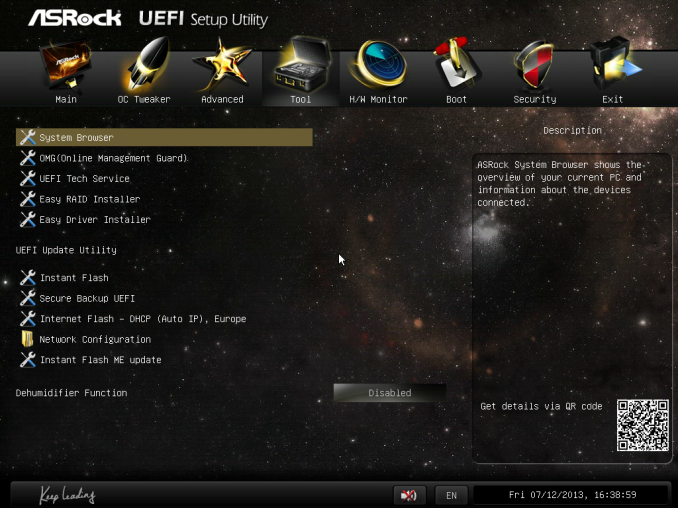
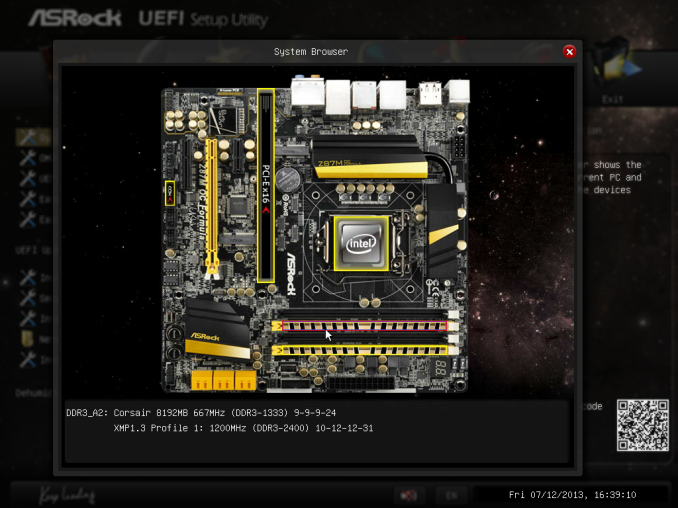
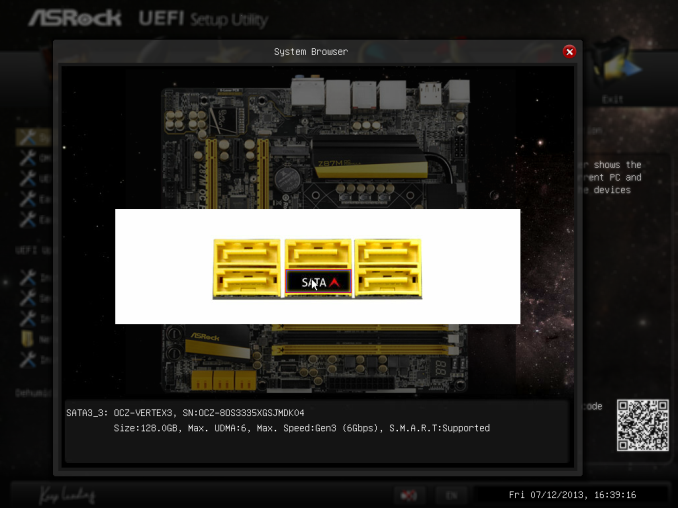
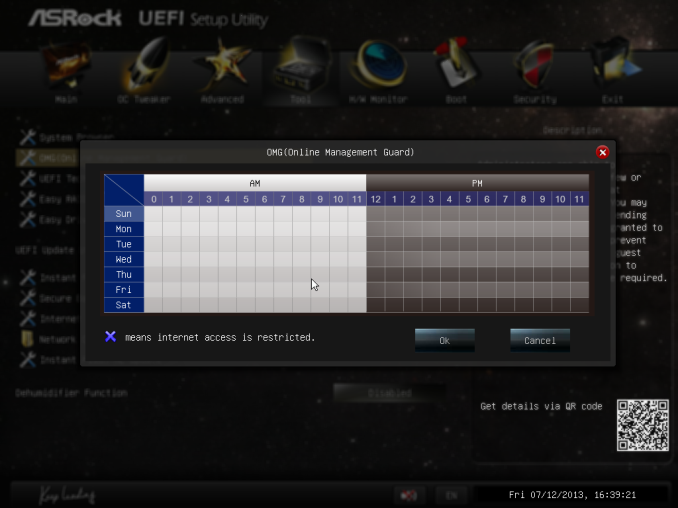
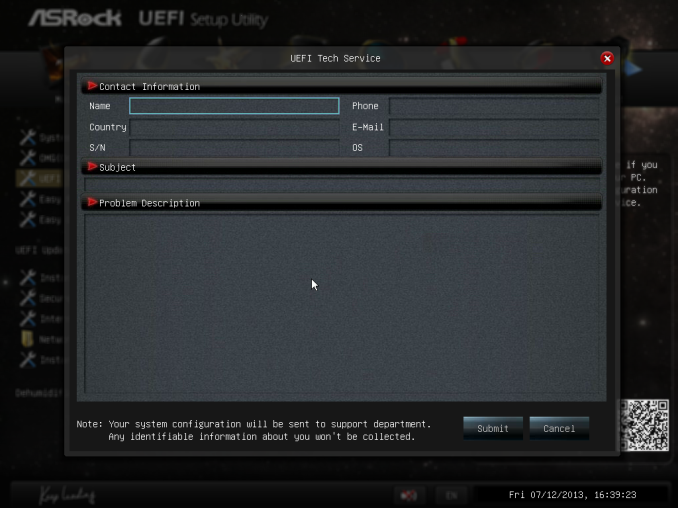
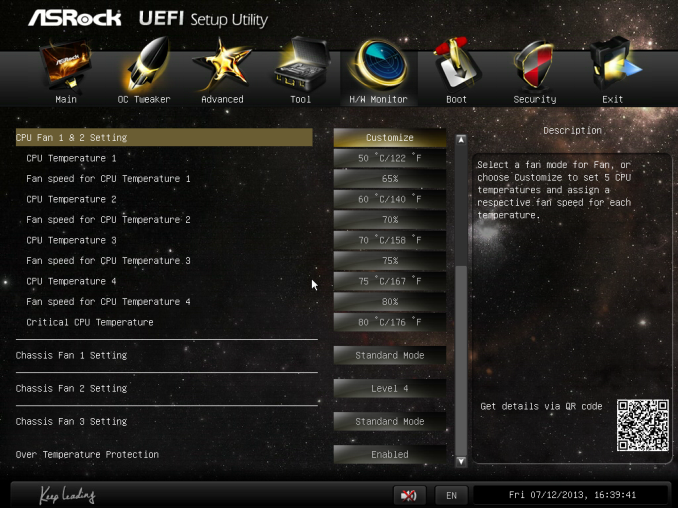














25 Comments
View All Comments
popej - Thursday, August 15, 2013 - link
If we talk about Haswell, then we could get about 4.0GHz on 4770 and 4.3-4.6GHz on 4770k. So it is rather 10% than 25%. I wonder what would be the comparison, if your task is able to effectively use TSX, which is missing in 4770k version?Will we see GPU drivers using TSX? Or games? Are you prepared to make a comparison?
fluxtatic - Monday, August 19, 2013 - link
Thank you, Intel, for artificially segmenting the lines.fluxtatic - Monday, August 19, 2013 - link
That first sentence is such a load. If you're any sort of enthusiast at all, you're not going to be buying a board with a business-oriented chipset. If you're not an idiot, you're going to buy decent RAM regardless - what extra expense are you talking about?psyside1 - Friday, August 23, 2013 - link
facepalm.jpgDanNeely - Wednesday, August 14, 2013 - link
A consumer use for the internal USB port might be bit-locker whole drive encryption. Truecrypt still doesn't officially support win8; and bit-locker requires one of a TPM (rare on consumer hardware), a USB drive as a keystore, or for the user to enter a 48 digit code (instead of a normal password) at each boot.I've never liked the idea of an external thumbstick even on a desktop; since you're one idiot borrowing it to copy data from being locked out of your box. An on-board port is a more elegant option than connecting an expansion slot brackets cable to an on board header but leaving the bracket in the case.
lcarros - Wednesday, August 14, 2013 - link
what does HDMI-In do?Rvenger - Wednesday, August 14, 2013 - link
I noticed you stated that the USB port is for a dongle for some software licenses. I interpret that the USB port is for cases that have a USB pass through cable instead of an actual 3.0 header.DanNeely - Wednesday, August 14, 2013 - link
It's a USB2 port (checked the manual); and USB2 pass throughs there have been mostly dead for a decade or so.Rvenger - Wednesday, August 21, 2013 - link
My bad, I should have noticed it wasn't blue.juhatus - Wednesday, August 14, 2013 - link
How does it compare agains the Asus Maximus VI gene or any other mATX Z87-board out there?I would really appreciate even a page about the competition..
Bitfenix prodigyM looks purrrfect for this :)